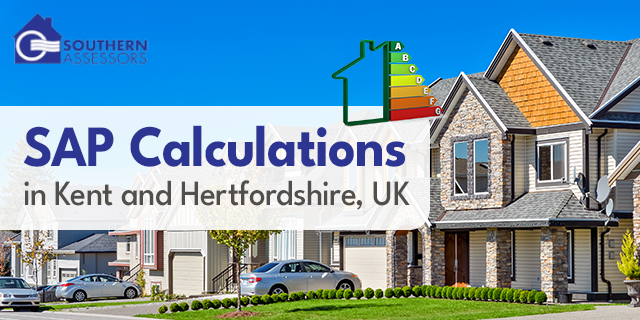SAP (Standard Assessment Procedure) calculations evaluate the energy efficiency of residential buildings in the UK. An essential and core component of building regulations in the UK, these calculations evaluate the expected energy costs of lighting, heating, and hot water in the building.
SAP calculations are a mandatory requirement in the UK not only for new residential buildings but also for conversions and certain residential extensions. Without these regulations, a building cannot meet the legal standards of energy efficiency set for construction, resulting in potential fines, legal implications, project delays, and more.
If you are a residential property owner looking for SAP calculations in Kent & Hertfordshire, UK, this blog is all you need.
Today, we will explore the history, aims, context, and guidelines of SAP calculations in the UK. We will also help you find and connect with professional SAP calculation service providers in Kent and Hertfordshire.
EPBR & Inception of SAP Calculations in UK:
While building regulations existed before the introduction of SAP calculations, these regulations were not as specific about energy efficiency. With countries around the world making a major commitment to reducing greenhouse emissions and energy consumption, increasing energy efficiency has emerged as a key focus. In response to this, the Energy Performance of Buildings Regulations (EPBR) was introduced in 2002.
EPBR required new buildings to meet minimum energy performance standards, a significant step towards improving their energy efficiency. SAP calculations were developed as a tool to assess compliance with the EPBR.
What is the Standard Assessment Procedure?
SAP (Standard Assessment Procedure) provides a standardized framework for evaluating a building’s energy performance. It assesses the expected energy costs for lighting, heating, and hot water in a residential building.
When constructing a new building, SAP calculations are performed twice:
- Design Stage SAP: At this stage, calculations for the Dwelling Emission Rate (DER) and the Target Emission Rate (TER) are completed. These calculations must be submitted to local building control before construction begins. A Predicted Energy Assessment (PEA) must be created if the property is sold off-plan. The PEA also serves as a reference to optimize the SAP calculations
- As-Built SAP: This is conducted near the end of the construction process. The final SAP report confirms that the building meets energy efficiency standards. An EPC certificate forms part of the as-built SAP and shows the energy efficiency and CO₂ emissions for the building on completion of the construction phase.
After all the evaluations, an Energy Performance Certificate (EPC) is then issued and then recorded in the Landmark database before the property is signed off and sold.
SAP ratings range from 1 to 100+, with higher scores indicating better energy efficiency. A score above 100 indicates that the property will likely generate more energy than it consumes, which benefits the environment.
The ultimate aim of SAP calculations is to ensure that homes in the UK are comfortable and environmentally friendly. This aligns with the UK’s broader goals of reducing carbon emissions and enhancing overall energy efficiency in the housing sector.
Simplify Your SAP Compliance with Southern Assessors:
Southern Assessors, a leading provider of air quality testing services in the UK, offers a comprehensive, fast, and reliable SAP service with our expert advisory and consultation. Our services include:
- Fully NHER-accredited energy assessments.
- Comprehensive Support from design to completion.
- Discounted air tests.
- Complete liaison with building control.
- Full consultation and advisory service
Most importantly, we guarantee a 100% pass, making your SAP compliance process easy, smooth and hassle-free. Find more information about us here Call@ 0800 6123801


